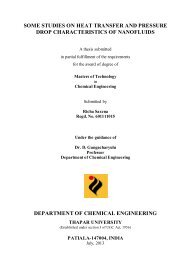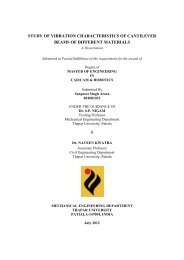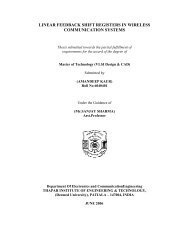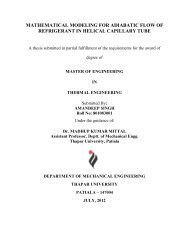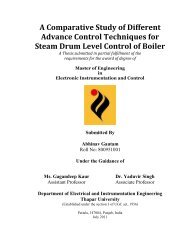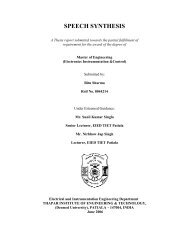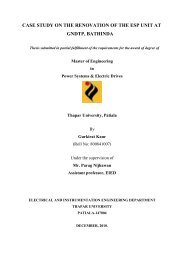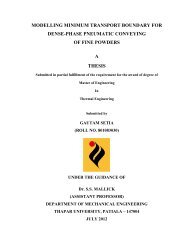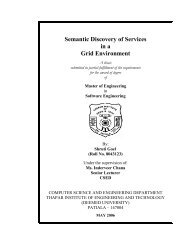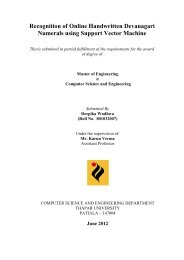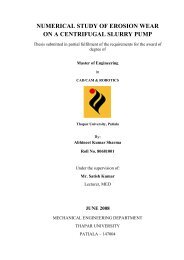from indigenous fermented foods and human gut ... - Thapar University
from indigenous fermented foods and human gut ... - Thapar University
from indigenous fermented foods and human gut ... - Thapar University
Create successful ePaper yourself
Turn your PDF publications into a flip-book with our unique Google optimized e-Paper software.
4.8 Adhesive properties<br />
4.8.1 Microbial adhesion to solvents<br />
98<br />
Chapter IV: Results<br />
The use of three solvents allowed the evaluation of the hydrophobic/hydrophilic cell<br />
surface properties of Lactobacilli <strong>and</strong> their Lewis acid-base (electron donor <strong>and</strong> acceptor)<br />
characteristics (Pelletier et al., 1997; Bri<strong>and</strong>et et al., 1999). As shown in Table 4.19, strains<br />
of L. delbrueckii <strong>and</strong> L. helveticus had a low partitioning percentage in the apolar solvent n-<br />
hexadecane, indicating that these strains possess a hydrophilic surface. All L. casei, <strong>and</strong> L.<br />
fermentum strains were characterised by a high affinity to n-hexadecane, indicating the<br />
hydrophobic nature of their surfaces (Table 4.19).<br />
In order to measure the Lewis acid-base properties of the bacterial surface, two solvents<br />
(chloroform <strong>and</strong> ethyl acetate) with the same van der Waals properties as n-hexadecane<br />
(Pelletier et al., 1997) were used in order to be sure that the affinity for each solvent tested<br />
was not due to van der Waals forces. The results of the microbial adhesion to chloroform<br />
showed that L. delbrueckii <strong>and</strong> L. helveticus strains (LKH-2, LKH-3 <strong>and</strong> LKH-5) had a low<br />
affinity for this acidic solvent, whereas all other strains had a strong affinity for it. When<br />
ethyl acetate, an electron donor, was employed for determining the microbial adhesion to<br />
solvents, adhesion values were noticeably high (ranging <strong>from</strong> 16.8 to 67.8%) for L.<br />
delbruckeii <strong>and</strong> L. fermentum strains, indicating that these bacteria also have an acidic surface<br />
character. L. casei LAM-1 strains also showed relatively good adherence value (30%) to<br />
ethyl acetate.



